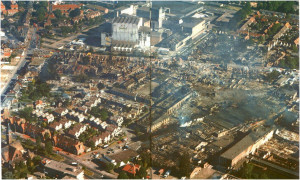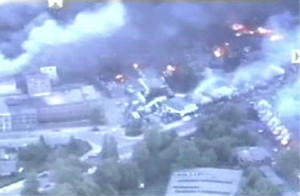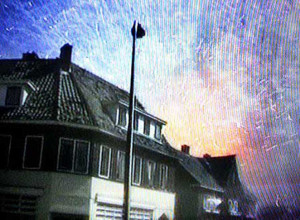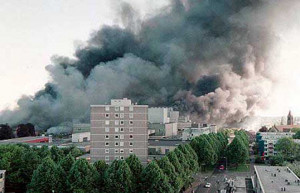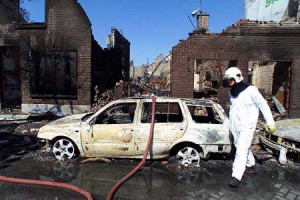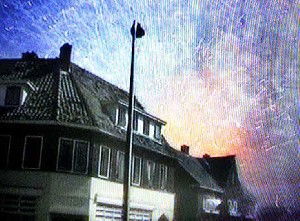On a Saturday shortly before 3 pm, a fire broke out in the C2 workshop (used for manufacturing fireworks) at a fireworks depot. Local fire-fighters were notified. Rockets spread the fire to containers located just opposite the blaze. At 3:08 pm, fire-fighters arriving on the scene requested reinforcements due to the multiple fire sources detected. Fireworks were flying all around the workshop. Many onlookers from the adjacent street approached the scene in order to witness the spectacle and had to be moved further away by emergency responders. A very intense deflagration accompanied by a fireball 85 m in diameter then rocked the zone. Fire-fighters were forced to retreat to seek shelter. The succession of explosions and associated shockwaves destroyed doors on the various storage depots: the central bunker violently burst, generating a 135-m diameter fireball along with a tremendous plume of smoke. The fire spread to a brewery adjoining the warehouse and nearby homes. A supermarket was razed, with a 3 to 4-ha zone resembling a bombarded landscape, and the site of the warehouse was replaced by a crater 13 m in diameter and 1.3 m deep. The force of the main explosion was evaluated at between 4 and 5 tonnes of TNT equivalent. The smoke column was visible 40 km away; glass panes and store windows were blown out over a radius in the hundreds of metres. In all, 22 deaths were reported, including 4 fire-fighters, with 974 people hurt, 50 of whom suffered serious injuries. Over 2,000 local residents had to be evacuated, 500 houses were destroyed or heavily damaged. Hundreds of rescue workers were needed to extract the injured. A health monitoring effort was required in the area for several years hence.
An investigation was conducted, but the cause of the accident could not be determined (malicious act? handling error? short-circuit? self-ignition?). Neither the structures nor containers appeared to offer sufficient protections relative to the fire and explosion risk; moreover, they were not or inadequately equipped with fire detection and extinction resources. Their layout did not respect regulatory distances. The risk classifications among stored products had most likely been underestimated or the products poorly classified (fireworks imported from China). Subsequent to this accident, public authorities modified the regulations on fireworks and a national database of fireworks storage was launched. Mandated safety distances were revised: 800 m for all installations using fireworks professionally, and 30 m for novices.
Download the detailed report in .pdf format (2.2 Mb)



